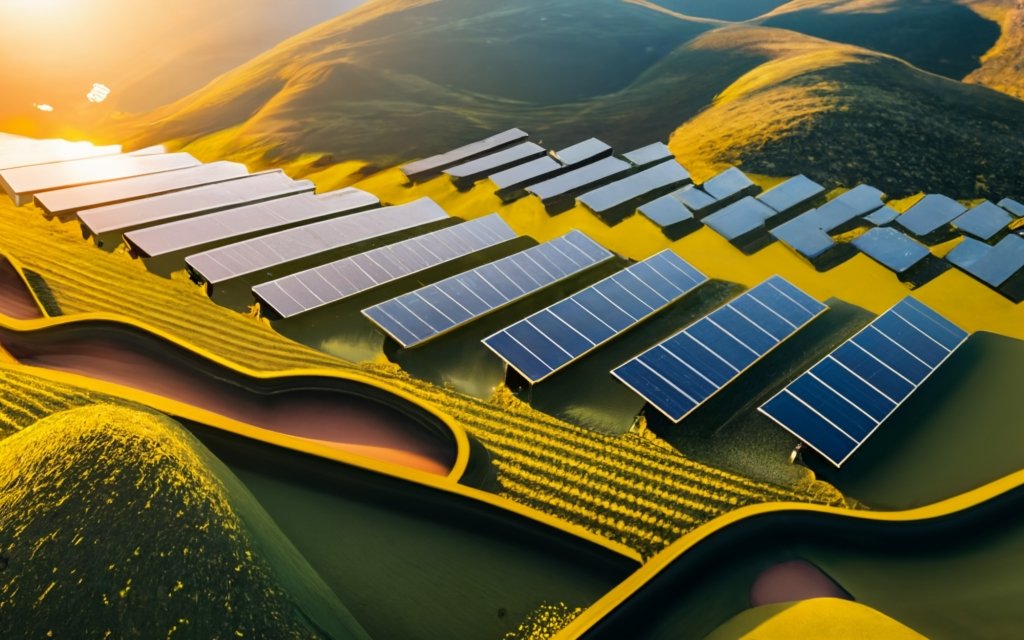How Do Solar Panels Work? The Science Behind the Magic

What Is Solar Energy?
Solar energy refers to the sun’s radiant light and heat that solar panels harness to generate electricity. Unlike traditional fossil fuels such as coal, oil, and natural gas that are finite and pollute the environment, solar energy is abundant and emits zero greenhouse gases. As such, it’s an eco-friendly and renewable energy source.
To fully answer the question “how do solar panels work,” we must first explore the science behind solar energy.
The Science Behind Solar Energy
Solar energy is a product of the sun’s nuclear fusion process, which releases photons into space. The photons then travel to Earth, where solar panels, which consist of photovoltaic (PV) cells, intercept them.
PV cells, also called solar cells, are made of semiconductor materials (most often silicon) containing positively and negatively charged layers. As the photons strike the PV cell surface, they excite the electrons in the semiconductor material. This excitement, known as the photovoltaic effect, generates an electric field.
What Are the Basics of Solar Panels?
Before we get into how solar panels work, it’s essential to understand their basic components and the different types available.
Solar panels have several crucial components. The most fundamental portion is the photovoltaic cell, which uses the sunlight’s photons to help create electricity. These cells sit in an encapsulant, which is a protective layer, and are generally sandwiched between a glass cover and a back sheet for structural support.
The PV cell comprises layers of semiconductor materials — 90 to 95% of solar panels use silicon as their semiconductor — specially treated to create an electric field. As mentioned earlier, when sunlight hits the cell, the photons in the light excite the electrons in the semiconductor material, causing them to move and generate an electric current. This photovoltaic effect is the key principle behind how solar cells work.
Solar panels (also called PV panels) also feature an aluminum or stainless steel frame to ensure durability and stability. This frame protects the delicate components inside and makes it easy to install and mount solar systems on various surfaces, such as rooftops or ground-mounted structures.
Solar panels also have various electrical connectors and wires to transfer the generated electricity from the panels to the building’s electrical system or a grid connection point. These connectors ensure a seamless flow of electricity, allowing you to harness the sun’s power for your energy needs.
Different Types of Solar Panels
All solar power works by basically the same principles of harnessing the sun’s photons and using those to excite electrons for electricity generation.
But are all solar panels the same?
Not quite. Various types of solar panels exist, and each has unique benefits and drawbacks. Let’s review the three main types of solar panels to help further answer the question, “How do solar panels work?”
Monocrystalline panels: One of the more common solar panel types, these are made from a single crystal structure, typically silicon, and provide the highest efficiency (15 to 22%) in converting sunlight into electricity. The uniform crystal structure is a driving factor in its efficiency, as it allows for better electron flow that results in higher power output. However, the downside to this high efficiency is a higher cost compared to other panel types.
Polycrystalline panels: These types of solar panels are made from multiple crystal structures, giving them a distinctive blue color. Their main benefits are their lower cost and respectable performance in various conditions. While they may not have the same efficiency level as monocrystalline panels (13 to 15%), they remain reliable and affordable solutions for solar energy generation.
Thin-film solar panels: To create these panels, manufacturers deposit a thin layer of photovoltaic material onto a substrate, such as glass or metal. The primary benefit of these thin-film panels is their flexibility and lightweight nature, making them suitable for applications where rigid panels are not ideal. They’re suitable for curved surfaces or for use in portable solar devices. Their big downside is their efficiency is generally around 7%, though they can go up to 18% in some cases.
Whether you’re a homeowner or business owner who wants to maximize efficiency with monocrystalline panels, affordability with polycrystalline panels, or flexibility with thin-film panels, you have plenty of PV panel options to harness clean energy from the sun.
How Do Solar Panels Work?
With all the basics of solar panels explained, we’re ready to explore the working principles of solar panels in more detail. Let’s dive in to how exactly photovoltaic panels create solar electricity and deliver it to your home or business.
Conversion of Solar Energy Into Electricity
We’ve already covered the photovoltaic effect, when the sun’s photons excite the electrons, knocking them loose from their atoms and creating an electrical charge. But what happens after that?
Once the electrons start flowing in one direction, an electrical circuit is completed, allowing the solar energy system to generate electricity. This electricity is not yet ready for residential or business use, as it is direct current (DC) electricity, and homes and businesses run on alternating current (AC) power. As such, it must go through one more conversion.
Converting DC Electricity Into AC Electricity
The next step is to make that DC power usable in a home or business, and this is done via a solar inverter. Some solar arrays have a single string inverter that handles this process, and other PV systems use micro-inverters, which are smaller inverters connected to one or several individual solar modules.
Regardless of the style of inverter your solar panel system uses, the concept is the same. The inverter switches the direction of a DC power input back and forth very rapidly, resulting in an AC electric current.




Leave a Reply